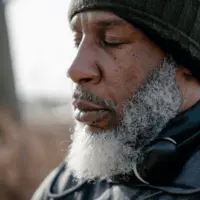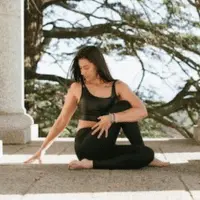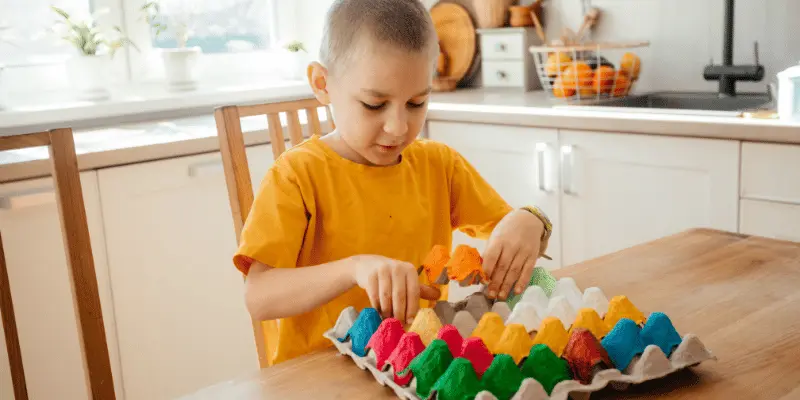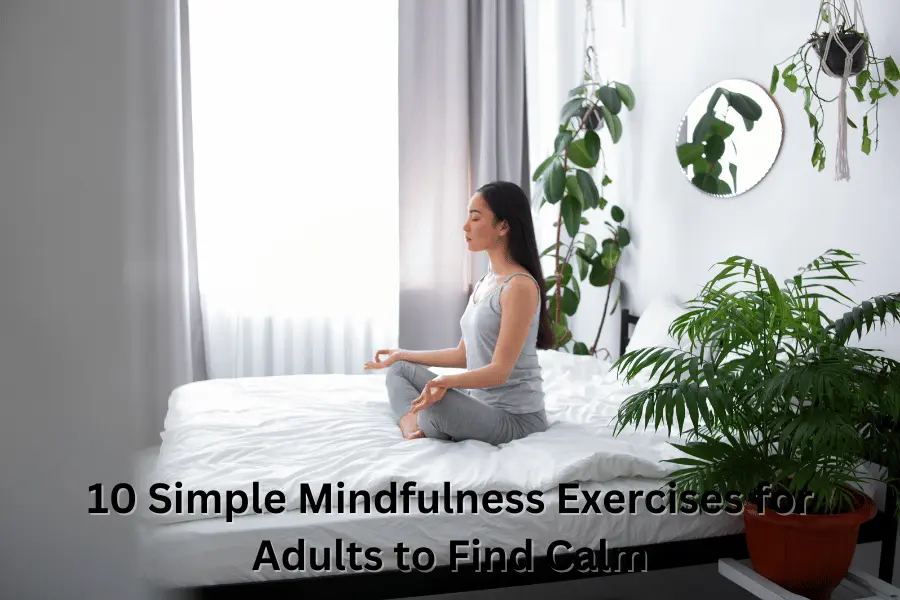The need for mindfulness in adults increases every day because they encounter daunting tasks. Unravel 10 mindfulness exercises for adults that can help one find calm. Even if you are not an adult, do not skip either. The information found here can also be helpful.
Learn the Benefits of Practicing Mindfulness – What are they?
A very famous benefit is that it helps reduce stress and anxiety. It is also true that practicing mindfulness exercises can improve health.
The effects of mindfulness is additionally evident in cognition and concentration. This is why people use mindfulness to develop their response to certain experiences.
Being mindful elevates your mood. It reduces negative issues like anxiety symptoms. People who are mindful are often satisfied with life, can fully engaged in activities and control their emotions.
Mindfulness – the definition


Mindfulness is simply defined as the human quality of being present in the moment. It is a simple expression that is often concerned with focusing on your thoughts and feelings without judging them.
The root of mindfulness dates back to 2500 years in Buddhism. It is founded on Zen principles and the training of sati. But, Jon Kabat-Zinn is widely known as the man who started a program to encourage mindfulness in the Western world. This is a mindfulness-based stress reduction program.
Mindfulness and meditation are terms used together. But they are not the same thing. Mindfulness means a mental state of calmness but meditation is a tool that puts you in that state.
Consider the Simple Mindfulness Techniques for Beginners
Let us now begin looking at easy mindfulness techniques for beginners.
Mindful breathing (2-3 mins daily)


Take a few minutes each day to practice deep breathing because this will make you aware of your thoughts and environment. This technique can strengthen your confidence and lower your stress levels. To do this:
- Put yourself in a position as comfortable as possible.
- Your physical body should be relaxed. We are talking about your shoulders, belly and even the muscles around your eyes.
- The next step is just to inhale and exhale.
- Take a pause and closely reflect on the sensation of air that goes in and out of your body.
Body scan meditation


In this kind of meditation, your whole body and its different parts are involved. You bring your attention to the sensations present in them. It doesn’t take long to do this. Let us show you how it can be done in a few minutes.
- Sit or lie in a comfy place.
- You will still need to focus attention on your breath. Then in a regular rhythm, perform inhalation and exhalation.
- The next step now is to move attention to the different parts of your body. We’re sure you know the parts we are talking about.
- When your mind is on a particular body part, pause and feel the unique sensations it brings. Please, do this without judgment.
- Bring your attention to the body as a whole and feel the sensations of wholeness.
Mindful eating


Mindful eating is a great way to turn a simple exercise into an opportunity to be self-aware. This exercise involves being fully engaged with our senses to appreciate our food. This means we appreciate the look, smell, texture and taste of our meal. As usual, we will tell you how you can do it right:
- First and foremost, begin by taking a short deep breath.
- Eat silently. As a matter of fact, try this during the first few minutes of eating. Feel the flavors and texture of the food.
- Take in small bites and slowly chew your food.
- When it’s time to drink water, gently sip it and notice the cool sensation in your mouth.
Walking meditation


This is practiced while walking, either in a straight line or in a circle. You can do this anywhere as long as distractions can be kept low. To do this effectively:
- Check-in with your body. Notice how your weight is distributed and feel the physical sensations on your foot.
- Walk slowly. Pay close attention to the smell and sound around you. Also pay attention to the sights.
- Focus on the feelings of your gait.
Mindful listening


In a world where people tend to focus on themselves rather than on the other person, it could be difficult to listen mindfully. With this exercise, you are sure to improve communication and foster good relationships. Here’s how you can do so.
- Get yourself into a comfortable position.
- Allow sounds and thoughts to pass through you without judging or labeling them.
- When you converse with people, listen and try to understand. If you want to reply, ensure you have carefully considered what you are about to say.
- You can also play a particular music or sound that you haven’t heard before and try to focus on the lyrics and beat.
Mindful Seeing


A new way of seeing, wouldn’t you agree? This exercise involves consciously noticing everything that is happening around you. You feel, sense, notice, and bring your attention to the moment. The good part is, there’s no right or wrong way of seeing it.
The Mindfulness Bell Exercise for Five Minutes
This exercise makes you feel grounded in the present. To begin, you close your eyes and listen for the cue. When the sound finally shows up, focus your attention on it. Follow through with concentration until it goes off.
Do not confuse Mindfulness with Meditation – There’s more to it
Again, meditation and mindfulness are not the same. But that sounds tricky, right? There are several mindfulness forms such as the ones discussed in this blog post. These forms of meditation are strengthened by meditation.
While mindfulness is a state of calmness and peace, meditation is the training that helps us achieve such. You can safely say mindfulness is a result of meditation.
This is not to say that mindfulness is just about meditation or relaxation. It is much more powerful and transformative. It is a meta-awareness, or as some put it, an awareness of your awareness. Others even refer to it as higher consciousness.
The idea behind mindfulness is that one can practice accessing the full consciousness. It is true that you might be mindful for a short period of time when you meditate but is there anyone who would want a benefit to be short-lived?
Mindfulness is about slowing down to enjoy things that you’d otherwise rush. It is a full-bodied experience that involves perceiving, feeling, and choosing. It involves choosing where to direct your attention and how to respond. It is not just about mind control. There are times when you feel anxiety. Just let it flow, recognize when you are carried away, and bring your mind back.
Mindfulness will not give you superpowers. It will give you what is already in your reach – clarity, focus, and being grounded. It will also diminish symptoms of anxiety.
5 Fun Mindfulness Interventions, Techniques for Adults


- The Observer Meditation: This looks at why it is beneficial to detach yourself from your internal thoughts and feelings. This kind of mindfulness helps you put some distance between who you are and the challenges in life that you might be over-identifying with. It usually starts with staying in a comfortable position and settle into your body and mind. Then, you let go of your thoughts and focus on where you are, envisioning every single thing.
- Five Senses: That is to say you engage your senses of sight, smell, hearing, touch, and taste.
- 3-Step Mindfulness Exercise: The first of step is to channel your focus to what you are currently doing or thinking. The second step is to channel your focus to your breath. The third step is to expand awareness outward, first to the body and then to the environment. When you are done, you can open your eyes slowly and carry mindfulness with you throughout the day.
- Mindful Walking Down the Street: This mindfulness allows room for choice between impulses and action which can help develop coping mechanisms and behavioral change. You don’t have to be in the streets in reality. All you need to do is visualize yourself walking down a street.
- The 3-Minute Breathing Space: Those who live busy lives can find this helpful in getting a mindfulness practice started. This exercise is broken into three sections. Each section lasts for one minute. The sections are similar to the 3-step mindfulness exercises – focus on your feelings at the present moment, focus on the breath, and expand your attention outward from the breath. And that’s it.
Mindfulness Activities for Adults
- Mindfully engage in an already existing task like brushing, washing or showering. This is highly recommended for those who are as busy as a bee in their daily activities. Let’s take brushing for instance. To be mindful, you need to focus on the sensation of the brush, the taste of the toothpaste and the bristles.
- Take a dance break. Just put on some good music and move your body in style. Dance like you are the only one watching and judging yourself. Just enjoy every moment.
- Mindfully engage in a sport and become fully present in the game and the moment. Visualize what it would be like to be successful and to achieve your goals. Connect with other teammates and practice mindful listening.
- Engage in mindful gardening. Feel the texture of the petals of the flowers. Smell its fragrance. For flowers that are edible, taste how delicious and sweet it is.
- Go for a mindful ride. Notice the wind on your skin, the movement of your body and your surroundings. Pay attention as the fresh air fill your lungs.
Some Advanced Mindfulness Exercises For Adults


- Meditation called Loving-kindness: This means sending love and kindness towards yourself and others. It helps you find peace and calmness within yourself. It also fosters positive emotions and good relationships.
- Practicing visualization: It allows you have a mental picture of your present situation.
- Mindful journaling or coloring: Pen down your thoughts, feelings and experiences without judgment. You can also engage in mindful drawing or coloring of things you love. You don’t have to be an expert in this to do so. This exercise promotes self-reflection. It is very active in reducing anxiety and depression.
- Mindful Yoga: We are talking about the mix of physical postures and breathing exercises aimed at helping you find serenity.
Helpful Tips to Integrate a Daily Mindfulness Practice
- Start practicing mindfulness in short sessions (5-10 mins daily). This will make it easier for you to lengthen the time whenever you want to.
- Set reminders to practice especially if you are a beginner or you are very busy. Let your mind and body know that this is important and you want to take it seriously. Doing this will make you committed and consistent.
- Try different types of exercises such as the ones mentioned in this blog post. You may not see the benefit of mindfulness if you are not leaving your comfort zone. Try something new and figure out which one works best.
- It would be helpful to practice mindfulness during routine activities like cooking or bathing.
Be Mindful of Your Everyday Tasks


Here’s how to become more mindful in your everyday activities or tasks.
- Cultivate mindfulness skills in your interactions. Let your conversations be meaningful. Stop being selfish by talking mostly about yourself. Ask questions and give room for others to express themselves.
- Another way is to engage in mindfulness activities like eating. As you engage in these activities, do so with heightened awareness.
- Mindful breaks and mindful pauses are things you should include in your daily life if you are the busy type.
- During and at the end of the day, practice gratitude. Be grateful for the beauty in life. 4 mindfulness activities to find calm in a group
The following are group mindfulness exercises that are helpful.
- Anchor breathing: The participating groups focus awareness on breath and body. They observe their thoughts and emotions while at the same remaining curious and compassionate.
- Mindful movement: Here, you bring your mind to focus through movement. These movements are gently performed while maintaining focus on each breath and becoming fully aware of the sensations that follow them.
- The silent connection: In this exercise, the group engages with each other and leverages the mindfulness in others to build strong connections without speaking. They can begin by walking around the room silently and then use eye contact or facial expressions to communicate.
- Goal setting: Goals can be shared among groups or recorded privately. Then, the group comes together to break them down and address them.
How mindful breathing can change your life for the better
When it seems your life is ebbing away, this simple mindfulness activity can serve as an anchor. It can help reduce anxiety disorders and to make you experience calmness. It can help elevate your mood and boost emotion. Truly, one’s life can be in chaos without it.
The above mindfulness exercises for adults can shape your life for good. You should start paying attention to immersing it into your routine in order to see how it works. We hope it does as you practice mindfulness every day.
FAQ’s on Mindfulness Practice
Q. I want to be aware of good mindfulness exercises. Tell me.
A. Some good ones are mindfulness meditation and mindful yoga.
Q. I want to improve my ability to be mindful. How can I do so?
A. You can learn mindfulness at your best when you practice acceptance and pay attention to your breath.
Q. Can I practice mindfulness at home? If yes, how?
A. You can. Just stay in a comfortable position and breathe in and out. Do not worry if your mind wanders. Guide it back to your breath.
Q. Help me find some examples of mindfulness exercises
A. Effective examples include body scan meditation and walking meditation.
Q. As an older adult, what mindfulness exercises can I do?
A. Journaling, gratitude, or walking.
Q. What is one way to practice mindfulness with fun?
A. Try with a group or incorporate it into an existing routine.
Q. Does meditation have any benefits?
A. Certainly. It boosts your physical, mental, and emotional health.



